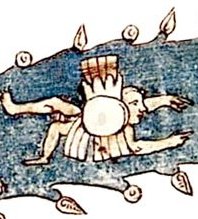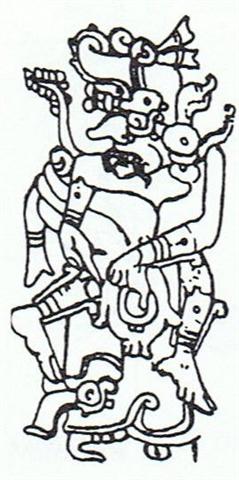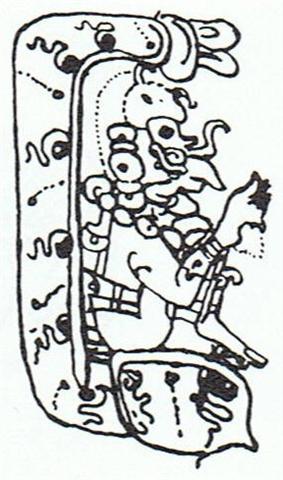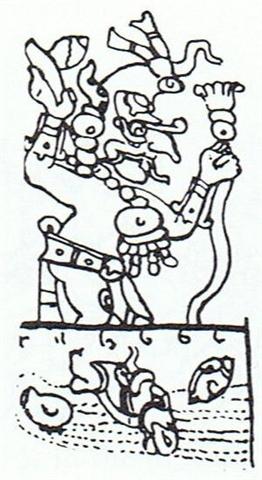Before the alphabet the documentation was based on pictures. And a picture says more than 1000 words. ... Most ingenious Thoth, said the god and king Thamus, one man has the ability to beget arts, but the ability to judge of their usefulness or harmfulness to their users belongs to another; and now you, who are the father of letters, have been led by your affection to ascribe to them a power the opposite of that which they really possess. For this invention will produce forgetfulness in the minds of those who learn to use it, because they will not practise their memory. Their trust in writing, produced by external characters which are no part of themselves, will discourage the use of their own memory within them. You have invented an elixir not of memory, but of reminding; and you offer your pupils the appearance of wisdom, not true wisdom, for they will read many things without instruction and will therefore seem to know many things, when they are for the most part ignorant and hard to get along with, since they are not wise, but only appear wise ... Whereas the alphabet is a painstaking method for following the words in the order as they are spoken the pictures will immediately convey the whole story (the whole picture so to say). ... Again Vakai arose, went, and entered into the house of King Hotu, into (the house) Hare Moa Viviri. Again Hotu begot (a child). It grew [he tupu] for nine months [i te iva o te marama] and then a boy was born [he topa tamaaroa]. He was given the name [he nape i te ingoa] Tuu A Hotu Iti (crossed out. ko te mata iti 'the small eye', wordplay 'the small tribe') A Hotu ... [E:1001] The name of the house (hare) was Moa Viviri. Words are created to evoke pictures: Moa. Poultry (general term); moa to'a, rooster; moa taga, chicken, moa rikiriki, chick; moa tarapiko, old rooster (with much twisted spurs - tara ); moa gao verapaka, chicken with bald neck; moa va'e verevere, with feathers on its legs; moa pipipipi with multicoloured spots; moa garahurahu, colour of dark ashes; moa tea, white; moa totara, frizzy; moa tu'a ivi raß, with bright yellow back. Vanaga. Fowl; moa toa, cock; moa uha, hen; moa ohoa, crowing of cocks; moa manua, wild fowl; moa herea, tame fowl. P Pau.: moa, domestic fowl. Mgv.: moa, cock. Mq.: moa, hen. Ta.: moa, cock, hen. Churchill. Mgv.: Aka-moa, to cook. Mq.: haamoa, id. To.: moa, dried. Ha.: moa, to dry, to roast. Mgv.: Moaga, 1. a red beard. Mq.: moaka, very red. 2. a fish. Mq.: moana, id. Sa.: moaga, id. Ha.: moana, a red fish. Mgv.: Moake, east wind. Ha.: moae, the northeast tradewind. Churchill. ... The element viri shows that the primal sense is that of causing a motion in rotation ... The diurnal rotation of the earth made noon arrive in the middle of the day and here was the place for 'cooking', i.e. the place where the motion of time turned around from up to down - just as in the cycle of the year high summer was a place for turning around. The day and the year were congruent in this respect.
... Then I become aware of ... a presence - a faint, ghostly glimmering, like moonglow, that has appeared on the solstice stone. I don't know how long it lasts, a second or two only I would guess, but while it is there it seems less like a projection - which I know it to be - than something immanent within the stone itself. And it seems to function as a herald for it fades almost as soon as it has appeared and in its place the full effect snaps on - instantaneously. It wasn't there, and then it's there. As Chris had described, the effect does curiously resemble a poleaxe, or a flag on a pole, and consists of a 'shaft', narrow at the base but widening a little towards the top, running up the left hand side of the solstice stone, surmounted by a right-facing 'head' or 'flag'. An instant later an almond-shaped spot of light, like an eye, appears a few centimeters to the right of the 'flag' and the effect is complete. Weirdly - I do not claim it has any significance - this flag-on-a-pole symbol is the ancient Egyptian hieroglyph neter, meaning 'god', or 'a god' - and not to be understood at all in the Judaeo-Christian usage of that word but rather as a reference to one of the supernatural powers or principles that guide and balance the universe. Manifested here, in this strange Stone Age temple, it glows, as though lit by inner fire.' ... The Mnajdra Temple is located on Malta and very ancient, dating to the time before the pyramids. Marija Gimbutas: 'To sleep within the Goddess's womb was to die and to come to life anew'. In a system of reincarnation the old one must die in order to be reborn, of course. At midsummer Sun comes to a standstill, and this must therefore be an occasion when the 'flame of life' had to be transported into a new body ... The Virgin Mother (Chimalman) conceived and gave birth to a baby boy who was the continuation of the Father - just like Tuu A Hotu Iti was in essence the same as Hotu Iti. ... And then the bone spoke; it was there in the fork of the tree: Why do you want a mere bone, a round thing in the branches of a tree? said the head of One Hunaphu when it spoke to the maiden. You don't want it, she was told. I do want it, said the maiden. Very well. Stretch out your right hand here, so I can see it, said the bone. Yes, said the maiden. She stretched out her right hand, up there in front of the bone. And then the bone spit out its saliva, which landed squarely in the hand of the maiden. And then she looked in her hand, she inspected it right away, but the bone's saliva wasn't in her hand. It is just a sign I have given you, my saliva, my spittle. This, my head, has nothing on it - just bone, nothing of meat. It's just the same with the head of a great lord: it's just the flesh that makes his face look good. And when he dies, people get frightened by his bones. After that, his son is like his saliva, his spittle, in his being, whether it be the son of a lord or the son of a craftsman, an orator. The father does not disappear, but goes on being fulfilled. Neither dimmed nor destroyed is the face of a lord, a warrior, craftsman, an orator. Rather, he will leave his daughters and sons. So it is that I have done likewise through you. Now go up there on the face of the earth; you will not die. Keep the word. So be it, said the head of One and Seven Hunaphu - they were of one mind when they did it ... As it was written in the stars: The house (β) of the Lion (alias the Puma) was finished at Denebola where at the same time his life continued in Virgo (the Virgin Mother):
The 'Tree' (the King) turned around and 'dropped a Fruit' (93 Leonis) which would stay inside for 9 months:
... I already knew that the ceiba tree was the model for the sacred World Tree of the Maya, but I had never seen one in flower when I knew what I was looking at. I was really excited because normally you can't see the blossoms even if you're there when the tree is in blossom. The fully mature trees are hundreds of feet high and the blossoms are very small. It's a ceiba, I chirped and began looking for a branch low enough to see one of the blossoms up close. Joyce Livingstone, a retired teacher, did the logical thing. She bent over, picked up a fallen branch, and held it out for me to see. I was too excited and full of myself to listen. She tapped my arm more insistently and still I didn't hear her. Finally, in frustration, she grabbed my wrist and raised her voice, Will you look at these? she said, waving the branch, and finally I did. What I saw stunned me, for in her hand lay a perfect replica of the earflares worn by the Classic Maya kings. Suddenly I understood the full symbolism of so many of the things I had been studying for years. The kings dressed themselves as the Wakah-Chan tree, although at the time I didn't know it was also the Milky Way ... The branches with their white flowers bent down along their thighs, the double-headed ecliptic snake rested in their arms, and the great bird Itzam-Yeh stood on their head. I already knew as I stood under the young tree in Tikal that the kings were the human embodiment of the ceiba as the central axis of the world. As I stood there gazing at the flowers in Joyce's hand, I also learned that the kings embodied the ceiba at the moment it flowers to yield the sak-nik-nal, the 'white flowers', that are the souls of human beings. As the trees flowers to reproduce itself, so the kings flowered to reproduce the world ... |
||||||||||||||||||||||||||||||||||||||||||||||||||||||||||||||||||||||||||||||||||||||||||||||
.jpg)









